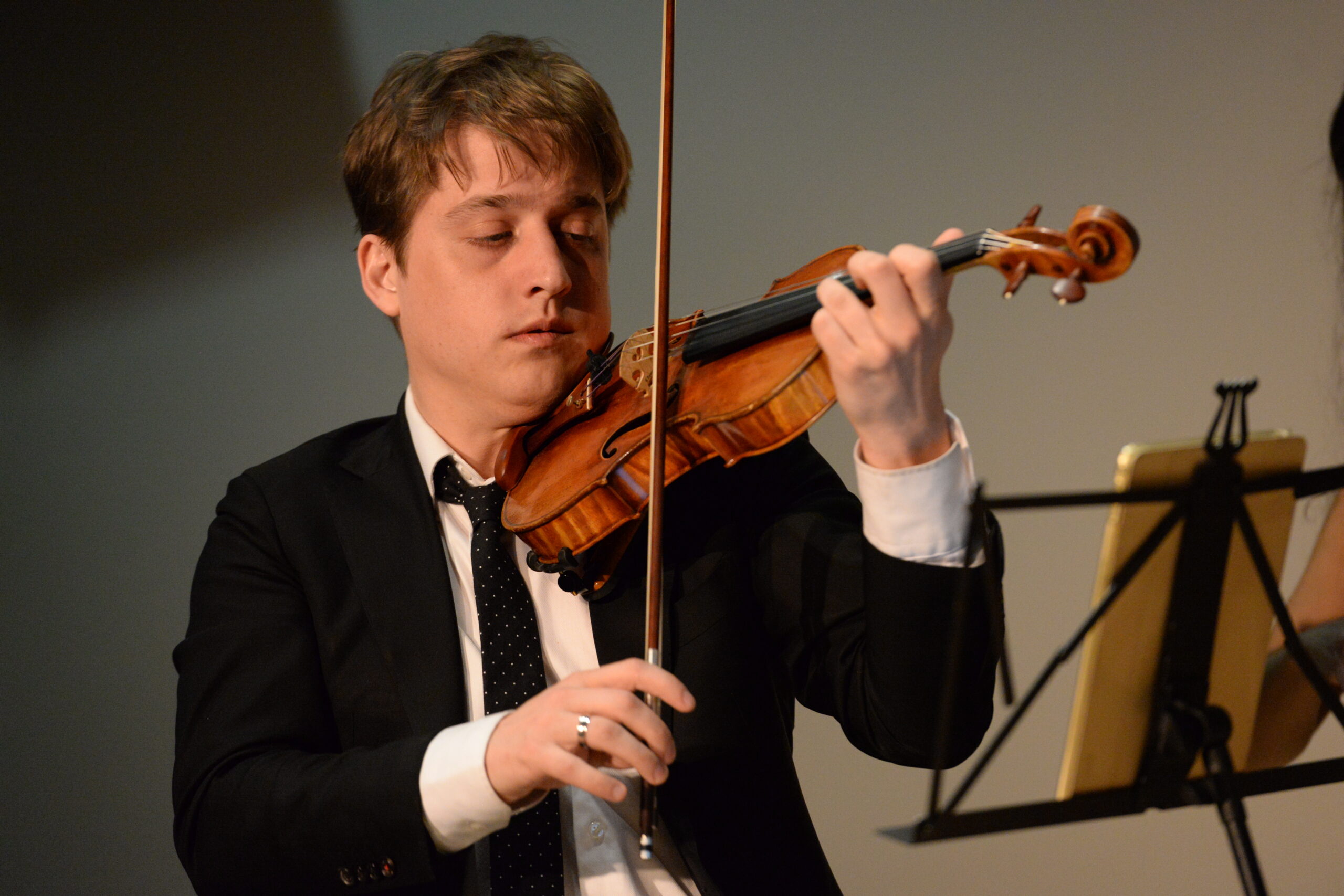The program began with Joseph Haydn’s “String Quartet Op. 64, No. 6 in E-Flat Major.” The opening movement’s sweet, flowing melodies made one wonder why this particular piece was, as second violinist Rachel Shapiro called it, “one of the lesser-performed works of his opus 64 set.” First violinist Nicholas Tavani seemed to be enjoying himself on stage. On more than one occasion, while deftly finding his way through Haydn’s winding melodies, he could be seen nearly removing himself from his seat.
The jaunt of the first movement was contrasted by the slow, delicate harmonies of the second – that is, before a sudden and stressed change of tempo added a sense of urgency to an otherwise peaceful proceeding. Aeolus’ ability to show both restraint and abandon was just one sign of the group’s musical maturity.
Shapiro described the fourth movement as “a lot of fun to play,” and it was easy to see why. Its reel-like pacing and infectious melodies seem as joyful to play as they are to hear. Challenging though it was, the young musicians never appeared to be performing for the purpose of displaying their formidable chops.
Bela Bartok’s “String Quartet No. 2” provided a counterbalance to Haydn’s joyous aplomb. Written during the horror of World War I, its dense, dreary and disjointed structure felt as though it was modeled after the chaos that surrounded its creation. As Tavani explained to the audience, the piece relies on heavy use of the minor third interval, which lent a sense of anxiety and dread to its three movements.
Frayed and frantic, the work’s second movement was a highlight of the evening. Its ever-changing pace was punctuated with intervallic leaps and tempo changes. Were it not for Aeolus’ virtuosity and vision, it may have fallen apart at any moment.
As Aeolus launched into Dvorak’s “String Quartet Op. 105 in A-Flat Major,” the mood in the auditorium shifted from dour to triumphant. In a lengthy explanation prior to the performance, violist Gregory Luce explained that the piece was written toward the end of the composer’s life, and expresses “the feeling of coming home after a long journey.” Indeed, it was easy to imagine the first movement playing as someone arrives home after a tour abroad, greeting old friends and familiar faces.
Things moved from excited to regal for the second movement, which maintained a ballroom-friendly waltz for most of its duration. It was here that the quartet seemed most at ease, allowing Dvorak’s brilliance to carry them along. Following the soft stroll of the third movement (Aeolus had more than once proved itself skillful at shifting gears), the quartet moved through the hurried intro to the fourth movement, which gave cellist Alan Richardson the chance to take the spotlight for a few moments. Jumping from pastoral nostalgia to fleet-fingered flights of fancy, it showcased Aeolus’ talents perhaps more suitably than any of the evening’s previous pieces. A fitting choice for a closer.
